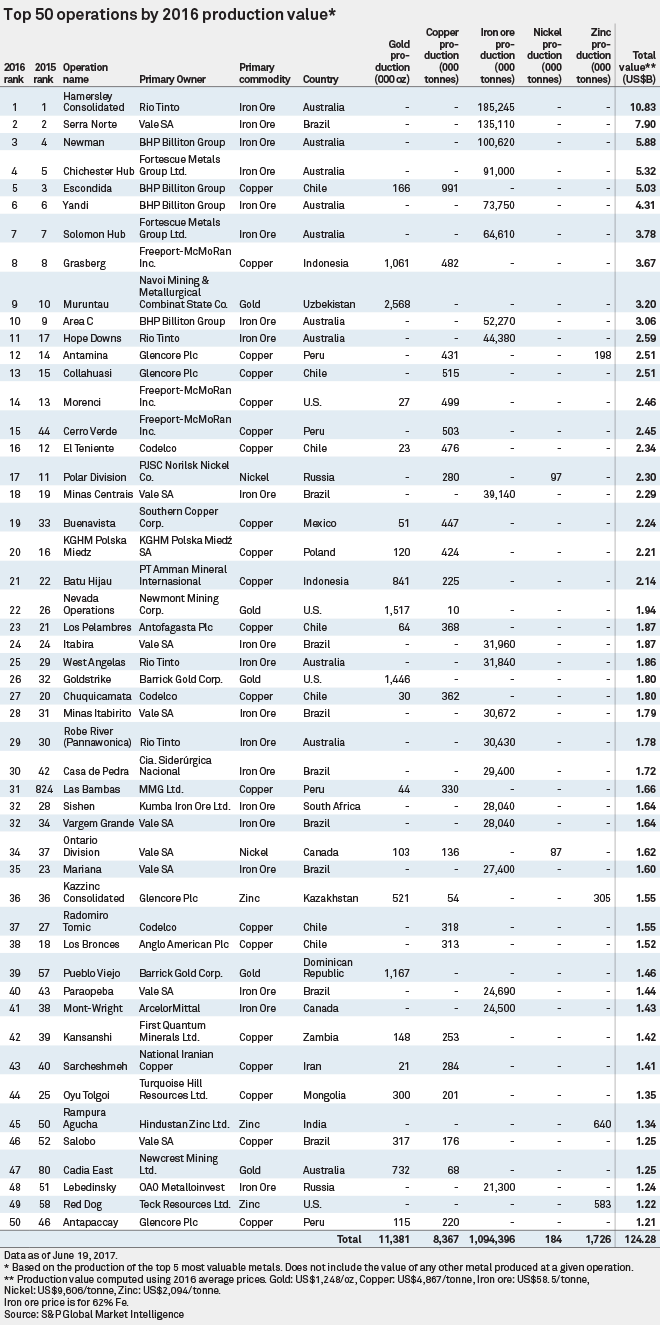Top 50 Most Valuable Mines
By Alex De Leon | 26 June 2017
The Worldwide Mine Production Trends report series examines the 2016 mine production trends and rankings of top producing mines by the five most valuable mined commodities - gold, copper, iron ore, nickel and zinc. The following article is part of the report series.
Iron ore and copper operations account for the lion's share of the world's largest metal mines, as measured by the nominal extracted value.
Gold, iron ore, copper, zinc and nickel are the five most important metals in terms of the value of their mined output. An empirical assessment of the most important individual mines producing these five metals (i.e. ignoring other metals and minerals) can be gauged by taking each operation's output of these five metals (ignoring other byproduct output) and multiplying by the corresponding annual average spot prices. Using this simple methodology, S&P Global Market Intelligence has ranked the world's top 50 operations, although the listing is complicated by many entries, including the top operation, being a consolidation of mines or even whole divisions.
The growth in production of iron ore and copper is reflected in their dominance of the ranking. Iron ore operations account for seven of the top 10 operations, and copper operations account for nine of the top 20. The cumulative production value for the top 50 operations was over US$124 billion last year, with Rio Tinto's Hamersley Consolidated iron ore mine taking top place with an ascribed production value of almost US$11 billion — note that iron ore assessments are based on equivalent production of 62% iron material but no price adjustment is made for the delivered grade of the ore.
Because of the importance of iron ore and copper, a majority of the top 50 operations are located in Australia, Brazil and Chile. There are 20 iron ore operations in the top 50, yielding some US$64 billion worth of iron ore — almost half of the total value of the leading 50 mines. Over 93% of this total iron ore value is attributed to Australia and Brazil. There are also 20 primary copper operations in the top 50 ranking, and they produced a total value of more than US$43 billion, a substantial amount of which is attributable to Chile's 3.3 Mt in 2016.
